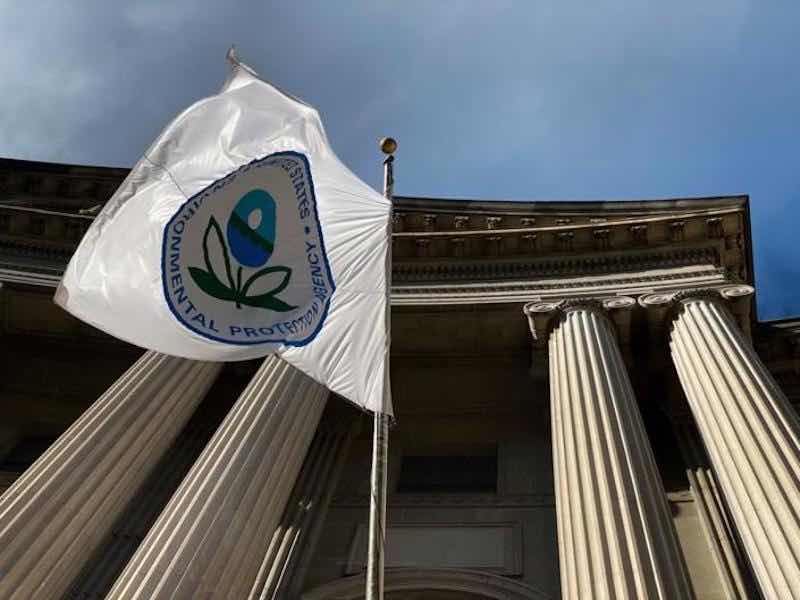The U.S. Environmental Protection Agency (EPA) issued a final rule to update the Toxics Release Inventory (TRI) chemical list to add nine additional PFAS subject to reporting requirements.
The Fiscal Year 2020 National Defense Authorization Act (NDAA) provides the framework for the addition of PFAS to the TRI each year. As previously announced, for TRI Reporting Year 2023 (reporting forms due by July 1, 2024), reporting is required for nine additional PFAS. In total, 189 PFAS are currently subject to TRI reporting requirements.
TRI data are reported to EPA annually by facilities in certain industry sectors — including federal facilities — that manufacture, process, or otherwise use TRI-listed chemicals above certain quantities. The data include quantities of such chemicals that were released into the environment or otherwise managed as waste. The data collected help to support informed decision-making by companies, government agencies, non-governmental organizations, and the public. The data collected also help inform EPA’s efforts to better understand the listed substances.
4 PFAS No Longer Claimed as Confidential Business Information
Under the 2020 NDAA, EPA must review confidential business information (CBI) claims before adding a PFAS to the TRI list if the chemical identity is subject to a claim of protection from disclosure. EPA previously identified four PFAS for addition to the TRI list based on the NDAA’s provision to include certain PFAS upon the NDAA’s enactment. However, due to CBI claims related to their identities, these PFAS were not added to the TRI list at that time. The identities of these PFAS were subsequently declassified in an update to the TSCA Inventory in February 2022 because at least one manufacturer did not claim them as confidential during prior reporting under the Chemical Data Reporting rule.
Because they were no longer confidential, pursuant to the NDAA, these four chemicals were added to the TRI list:
- Alcohols, C8-16, γ-ω-perfluoro, reaction products with 1,6-diisocyanatohexane, glycidol and stearyl alc. (2728655-42-1)
- Acetamide, N-[3-(dimethylamino)propyl]-, 2-[(γ-ω-perfluoro-C4-20-alkyl)thio] derivs. (2738952-61-7)
- Acetic acid, 2-[(γ-ω-perfluoro-C4-20-alkyl)thio] derivs., 2-hydroxypropyl esters (2744262-09-5)
- Acetamide, N-(2-aminoethyl)-, 2-[(γ-ω-perfluoro-C4-20-alkyl)thio] derivs., polymers with N1,N1-dimethyl-1,3-propanediamine, epichlorohydrin and ethylenediamine, oxidized (2742694-36-4)
Addition of 5 PFAS with Final Toxicity Values
The 2020 NDAA includes a provision that automatically adds PFAS to the TRI list upon the Agency’s finalization of a toxicity value. In December 2022, EPA finalized a toxicity value for perfluorobutanoic acid (PFBA), its anion, and its related salts. Pursuant to the NDAA, the following five chemicals have been added to the TRI:
- PFBA (375-22-4)
- Perfluorobutanoate (45048-62-2)
- Ammonium perfluorobutanoate (10495-86-0)
- Potassium perfluorobutanoate (2966-54-3)
- Sodium perfluorobutanoate (2218-54-4)
Reporting forms for these PFAS will be due to EPA by July 1, 2024, for calendar year 2023 data.
As part of EPA’s PFAS Strategic Roadmap, the Agency also proposed a rule in December 2022 to enhance PFAS reporting to TRI by eliminating an exemption that allows facilities to avoid reporting information on PFAS when those chemicals are used in small, or de minimis, concentrations. Because PFAS are used at low concentrations in many products, that rule would ensure that covered industry sectors and federal facilities that make or use TRI-listed PFAS will no longer be able to rely on the de minimis exemption to avoid disclosing their PFAS releases and other waste management quantities for these chemicals.



































